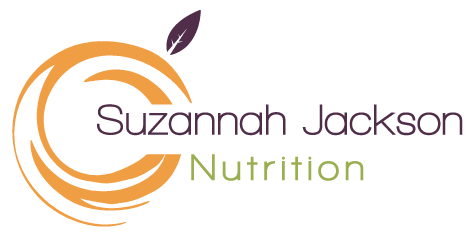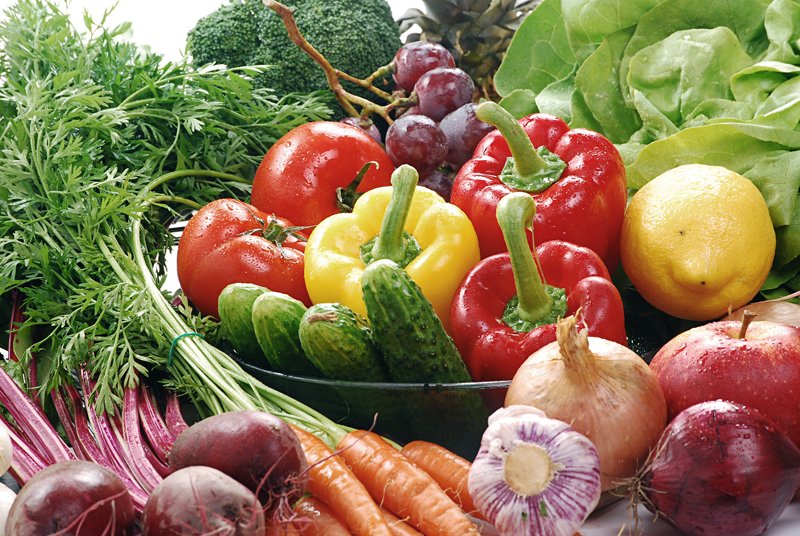This month why not challenge yourself to eat more vegetables.
Studies show that people who consume more plant foods have a lower risk of chronic diseases such as heart disease, cancer and diabetes. It is the phytonutrients within the plants that help the body eliminate toxins, improve cardiovascular health and promotes healthy estrogen metabolism.
Fruits, vegetables, wholegrains, legumes, nuts and seeds, herbs and spices all contain phytonutrients.
Phytonutrients come in a whole range of colours: red, orange, yellow, green, blue, purple and white.
Aim to eat one or two portions of each colour per day.
RED FOODS
Red foods contain phytonutrients that help protect the immune system, heart, brain, and liver.
The list of red foods is huge, including apples, beetroot, cranberries, cherries, pink grapefruit, pomegranate, raspberries, strawberries, tomato, watermelon.
Try something new this month
Ways to eat more red food:
- Add fresh tomatoes, goji berries or pomegranates to your green salad
- Add a tomato sauce instead of a white sauce to your pasta
ORANGE FOODS
Orange foods help to protect the immune system as well as eyes and skin. Orange foods include apricots, carrots, mango, oranges, papaya, pumpkin and sweet potato.
Some of these fruits you can get as dried fruit as well as fresh, but be aware they usually have added sugar. Be aware too that some starch vegetables such as carrots are also relatively high in sugar. Turmeric is a beneficial spice that contains potent anti-inflammatory compounds, so remember to add this to your stir fries and stews, or even into a smoothie
Ways to eat more orange food:
- Swap a baked potato to a sweet potato
- Sprinkle turmeric powder onto a stir-fry
YELLOW FOODS
Yellow foods contain compounds that are anti-inflammatory and may protect the heart, brain, eyes and skin.
Choose from apples, pears, bell peppers, corn on the cob, ginger root, lemon, pineapple and banana.
Pineapple contains an enzyme called bromelain, which can be helpful in breaking down foods. Ginger contains anti-inflammatory compounds
Ways to eat more yellow food:
- Grate ginger into a stir-fry
- Have slices of apple as a snack with a few unsalted nuts or nut butter
GREEN FOODS
Green foods contain compounds that are anti-inflammatory and may protect the heart, brain, liver and skin.
It is good to note that because green foods help the liver to work, they also help to keep hormones in balance.
The green list is huge, so there is no excuse not to eat from this category.
Examples include: apples, artichoke, asparagus, avocado, beans, bok choy, Brussels sprouts, chives, kale, mint, parsley, peas, spinach, olives, etc
There is a group of phytonutrients called cruciferous or Brassica vegetables which have an anti-cancer property called glucosinolates. These glucosinolates give some of these vegetables a smelly sulfur aroma which are key for supporting liver detoxification.
When cruciferous vegetables are chopped or chewed, the glucosinolates turn into active compounds called isothiocyanites (Indole-3-carbionol, sulforaphane). These phytonutrients change the way estrogen is metabolized or broken down in the body. As a result, eating these vegetables is associated with a decreased risk of hormone or estrogen related cancers.
Cruciferous vegetables include: Bok choy, broccoli, Brussels sprouts, cabbage, kale, rocket and watercress.
Ways to eat more green food:
- Enjoy ½ an avocado with scrambled eggs
- Add more herbs and spices to you cooking
BLUE/PURPLE/BLACK FOODS
Blue, purple and black foods contain anti-inflammatory compounds plus they may protect the brain and heart. Of all the colours this category is eaten the least of on a daily basis. Of course one reason people eat less of this category is there are less options compared to green and orange, however there are still plenty to choose from.
Eg: blueberries, blackberries, purple cabbage, aubergine, purple kale, black olives, black rice
Resveratrol is a purple phytonutrient that you may have heard of, known for promoting healthy ageing by reducing inflammation and blood sugar as well as benefits for the cardiovascular disease. Food sources of resveratrol include grapes (especially in the skin), dark chocolate and blueberries.
Ways to get more blue/purple/black foods:
- Add berries to porridge or smoothies
- Make a ratatouille with aubergine
WHITE/TAN/BROWN FOODS
It is easy to think of foods like pasta, bread, cereal cakes in this category, however this is not the food to include here, instead focus on the nuts and seeds, spices, wholegrains, fruit and vegetables that are beneficial for your health.
Apples, cauliflower, chickpeas, coconut, dates, garlic, ginger, mushrooms, nuts, onions, pears, seeds, brown rice, oats, quinoa
Allicin is a compound in garlic that is anti-cancer, anti-bacterial and anti-viral effects. It is recommended to crush or chop your garlic and leave for 5 minutes before cooking to maximise the production of allicin.
Ways to get more white/tan/brown/foods:
- Dip vegetables into hummus
- Add mushrooms to soups and stir-fries
So what can you do?
Perhaps you are stuck in a rut of eating the same foods over and over again. Start by making a note of the colours you eat and getting a broader spectrum and more colour variety.. Make it a goal to get the full spectrum of colours every day.

Here are my top tips for eating more phytonutrients every day
- Make it a goal to try one new plant food (fruit, vegetable, nut, seed, legume, wholegrain) per week.
- Stock up on frozen vegetables for easy cooking
- Store fruit and vegetables where you can see them so you remember to eat them
- Take fruit or veg with you to eat as a snack
- Eat dishes with lots of vegetable variety eg stir-fries, soups
- Add herbs and spices to your cooking
Reference: The Institute of Functional Medicine Phytonutrient Spectrum Nutrient Guide

